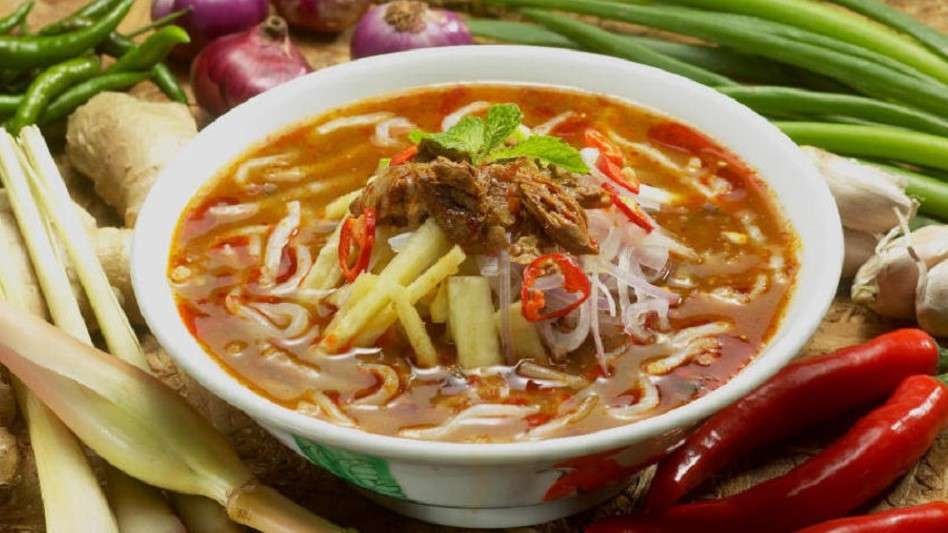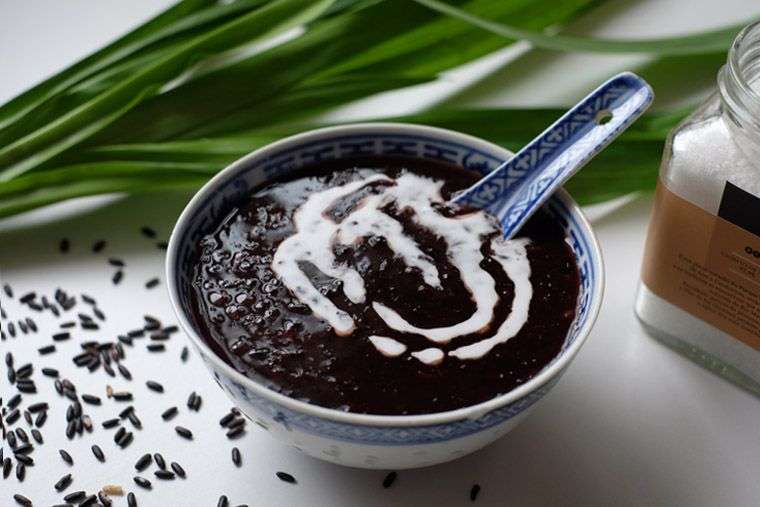With the bear mention of the name Asam Laksa; Malaysians would probably stare dreamily into space recalling the taste of this spicy noodle soup dish. Its slightly acidic asam-based soup served with noodles and topped with chicken and prawn; it has become a local favourite amongst Malaysians.
Origin of Asam Laksa
Having various theories of its origin, the exact roots of this dish is still unclear till this day. However, the closest answer is from the Maritime Southeast Asia. Though differing from other theories and claims from other countries, in the case of Malaysia, it is thought that the Chinese immigrants in Malacca had introduced the dish.
Within Malaysia, people claim that the version of the dish from Penang is one of the best. Furthermore, even outside Penang, the popularity of this noodle dish is simply prevalent. You can find it at almost any hawker stores across Malaysia, making it a popular lunch option for locals.
Asam Laksa Recipe: How to Make Authentic Assam Laksa
Recipe by LokaTasteDifficulty: Moderate4
servings45
minutes45
minutes428
kcalWith several steps and preparations, this dish may be a little challenging for beginners to make. Even then, it shouldn’t pose much of a problem if you possess enough patience to follow through this recipe, and you’ll be able to recreate Asam Laksa in your own home by the end of it!
Ingredients
¼ cup of asam jawa or tamarind paste
8 cups of water
3 ikan kembung (mackerel)
3 slices of asam gelugor (aka dried tamarind skin)
12 to 15 stalks of daun kesom or mint leaves
2 tablespoons of sugar
2 teaspoons of salt
2 packets of fresh thick rice noodles (total of about 950 grams)
1 small cucumber (cut into short, thin strips)
½ pineapple (cut into short, thin strips)
1 red onion (thinly sliced)
2 red chillies (seeds removed and thinly sliced—used for making garnish)
6 stalks of mint leaves (with stem removed)
4 tablespoons of hei koh
1 lime (cut into wedges)
7 dried chillies (seeded, soaked in water and drained—used for making spice paste)
3 red chillies (seeded and cut into pieces—used for making spice paste)
10 shallots (peeled and cut into quarters)
2 stalks of lemongrass (bottom third only, thinly sliced)
1 inch of peeled, fresh turmeric
¾ inch of cube belacan (toasted)
Directions
- Start by making the spice paste. With 60 ml of water, add dried chilli, red chilli, shallots, lemongrass, fresh turmeric, and belacan into a blender. Blend until it becomes a paste-like consistency and then transfer into a bowl.
- Move on to preparing the broth, first, rinse the asam jawa then place it in a bowl. Pour 240 ml of hot water into the bowl to dissolve some of the asam jawa pulp. Strain for the juice and discard the pulp.
- In a large pot, pour 2 litres of water and let it boil. Once the water has boiled, add ikan kembung, and lower the heat to medium-low and let it simmer for 15 minutes. Then remove the fish and strain the liquid through a metal strainer (you should get about 6 cups of fish stock by the end of this step).
- Next, pour your trained fish stock back into the pot, and add tamarind juice, the blended spice paste, asam geugor, and daun kesum. Boil the pot over low heat and let it simmer while you prepare the fish.
- Retrieve the fish you’ve removed from the pot previously, and remove the bones and flake the meat when it is cool enough to be handled.
- Add the fish flakes back into the pot and season the soup with a dash of salt and sugar.
- Next, move on to preparing the noodles. In a pot, cook the noodles in boiling water for 1 to 2 minutes. Then, remove and strain the noodles.
- Onto assembling the dish, on a bowl of your choice, place some noodles and top it with some julienned cucumber, pineapple, onion, red chilli, mint leaves, and bunga kantan. Then, the broth over the noodles.
- Finally, place some hei ko and lime wedges on the side and your Asam Laksa is ready to be served!
Ways to Enjoy Asam Laksa
If you’re craving for a spicy noodle dish with a refreshingly sour aftertaste; the Asam Laksa would be what you’re looking for. Adjust the cuisine accordingly by adding your preferred amount of hei ko, and make your meal an enjoyable one!
Explore other popular Malaysian delights with Lokataste Recipe and more!











